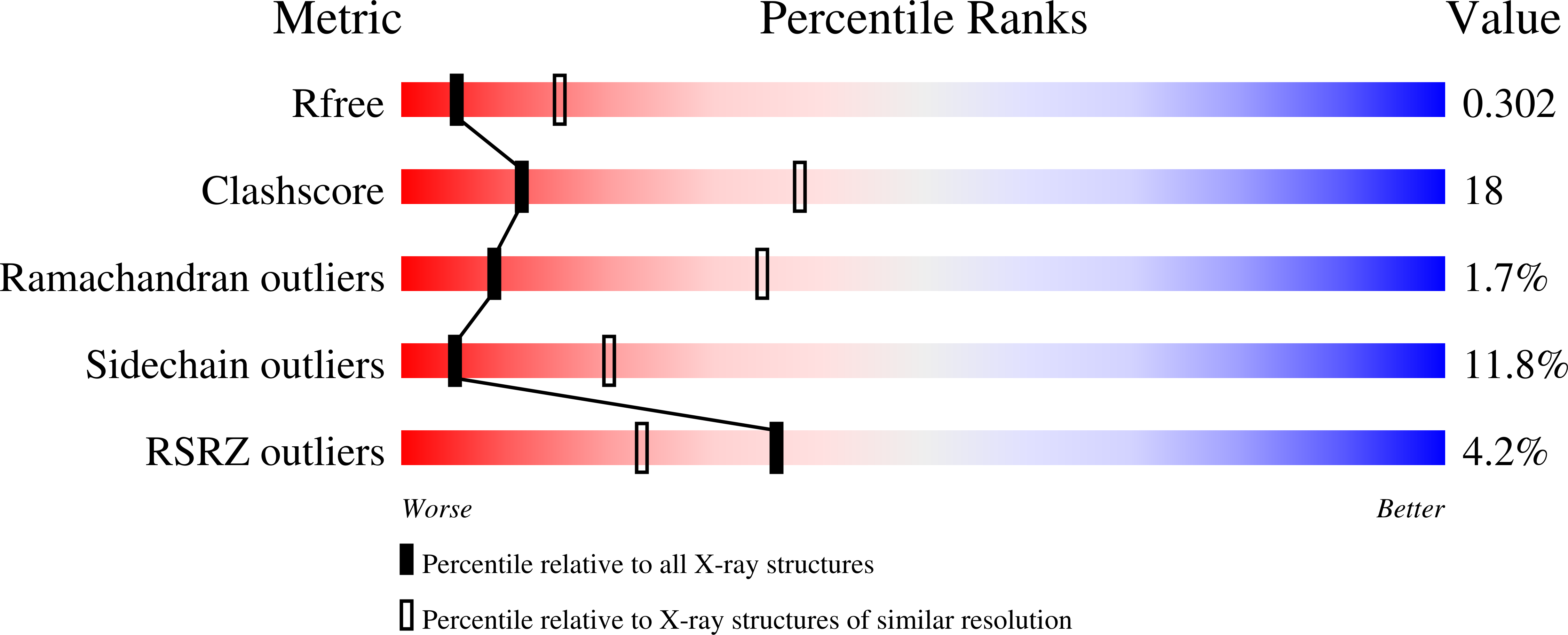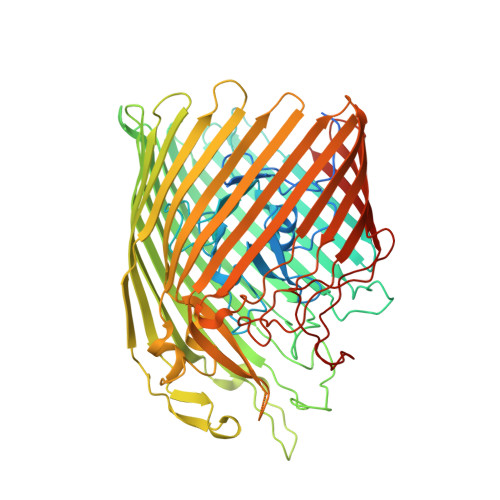Acquisition of ionic copper by the bacterial outer membrane protein OprC through a novel binding site.
Bhamidimarri, S.P., Young, T.R., Shanmugam, M., Soderholm, S., Basle, A., Bumann, D., van den Berg, B.(2021) PLoS Biol 19: e3001446-e3001446
- PubMed: 34762655
- DOI: https://doi.org/10.1371/journal.pbio.3001446
- Primary Citation of Related Structures:
6FOK, 6FOM, 6Z8Q, 6Z8R, 6Z8S, 6Z8T, 6Z8U, 6Z8Y, 6Z8Z, 6Z91, 6Z99, 6Z9N, 6Z9Y - PubMed Abstract:
Copper, while toxic in excess, is an essential micronutrient in all kingdoms of life due to its essential role in the structure and function of many proteins. Proteins mediating ionic copper import have been characterised in detail for eukaryotes, but much less so for prokaryotes. In particular, it is still unclear whether and how gram-negative bacteria acquire ionic copper. Here, we show that Pseudomonas aeruginosa OprC is an outer membrane, TonB-dependent transporter that is conserved in many Proteobacteria and which mediates acquisition of both reduced and oxidised ionic copper via an unprecedented CxxxM-HxM metal binding site. Crystal structures of wild-type and mutant OprC variants with silver and copper suggest that acquisition of Cu(I) occurs via a surface-exposed "methionine track" leading towards the principal metal binding site. Together with whole-cell copper quantitation and quantitative proteomics in a murine lung infection model, our data identify OprC as an abundant component of bacterial copper biology that may enable copper acquisition under a wide range of conditions.
Organizational Affiliation:
Biosciences Institute, The Medical School, Newcastle University, Newcastle upon Tyne, United Kingdom.















